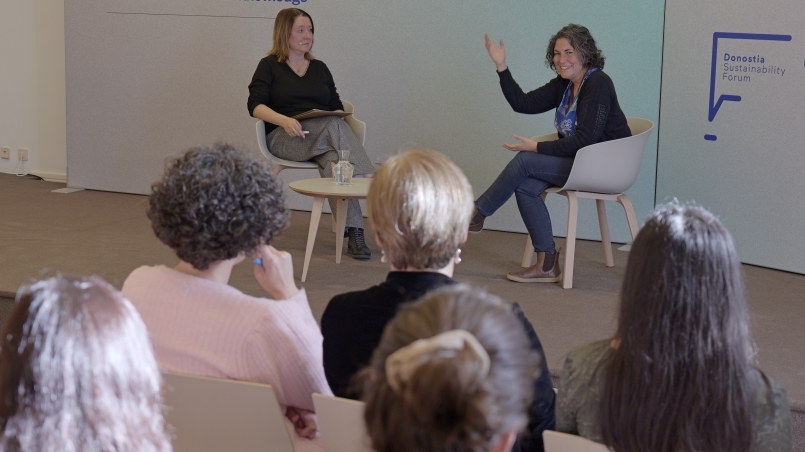The challenge is to invest quickly and well in projects that truly have transformative mobility potential
<p> We are in an unprecedented moment of transformation in the transport and mobility sector. "We will need to make an additional effort to adapt, do things differently, and probably set untraditional solutions," said María José Rallo at the UPV / EHU Summer Courses.</p>

The Ministry itself is embarking on this transformation process. We are aware that we have to adapt to the social and technological challenges presented to us and respond to the needs of society. This is not about simply making infrastructures, it is not about being far from reality, but about making a transformative regulation that affects the entire productive network.
Within this transformation, the Ministry is working with three instruments. The task, the mobility strategy; regulation and financing, that is, the European NextGen Recovery, Transformation, and Resilience plan.
The plan affects all economic and social activity. The Ministry of transport and mobility will manage three of its components.
Sustainable, safe and connected mobility in urban environments and interurban transport mobility will receive more than 13.2 million euros in 4 years. They will be historical investments with an anti-cyclical effect. It is intended to have short-term effects and also guide activity in the medium and long term. Co-management with Autonomous Communities, city councils, and private companies has been one of its characteristics.
Out of the 7,600 million dedicated to the Ministry's investments, 3,600 will be earmarked for subsidies and aid to city councils (1,500). Autonomous Communities (1,000) and private companies (1,000). Of the Ministry's investments, most of it will go to the railway system, with a clear commitment to the commuter train network as a transport system for urban and metropolitan environments (1,500 million). “We must make this modality a super attractive transport option for citizens. An easy, comfortable, and safe transport. "
María José Rallo has expanded on the objectives of the aid that the city councils will receive. First, facilitate the implementation of low-emission zones, with all that their management entails. The promotion of a transport system that is detrimental to the private car. Most cities have been formed by and for the car. 70% of the public space is dedicated to the car. The model is going to change. The third objective is the transformation of public transport towards a zero-emission fleet and, finally, the digitization of the system.
Air quality in a city is not just decarbonization. Air quality is the quality of life in cities. "In front of the European Commission, we have to justify the impact of these actions on air quality and noise reduction."
Local entities have until September 30 to present their projects. City councils with more than 50,000 inhabitants (obliged to establish low emission zones) or those of 20,000 under certain conditions. The selection will be made by competitive competition, which is why the General Secretary for Transportation and Mobility pointed out that “The maturity of the projects is fundamental. Investments have to be truly transformative and 40% of the score depends on the degree of maturity. Wonderful "PowerPoints" that have nothing behind them or are impossible to put into practice will not be accepted.
“The plan is an unprecedented opportunity that will allow us to accelerate all the investments that are needed for the digital and sustainable transformation of mobility in which we cannot fail. We all have to pull our socks up. Either we cooperate or we fail. Work in coordination with all public and private agents and try to involve the whole of society.
In this regard, María José Rallo says they know that if there is no social acceptance of the different projects, these projects do not move forward.
The challenge is to invest quickly and well, in projects that truly have transformative potential. We must do it well and all together.

